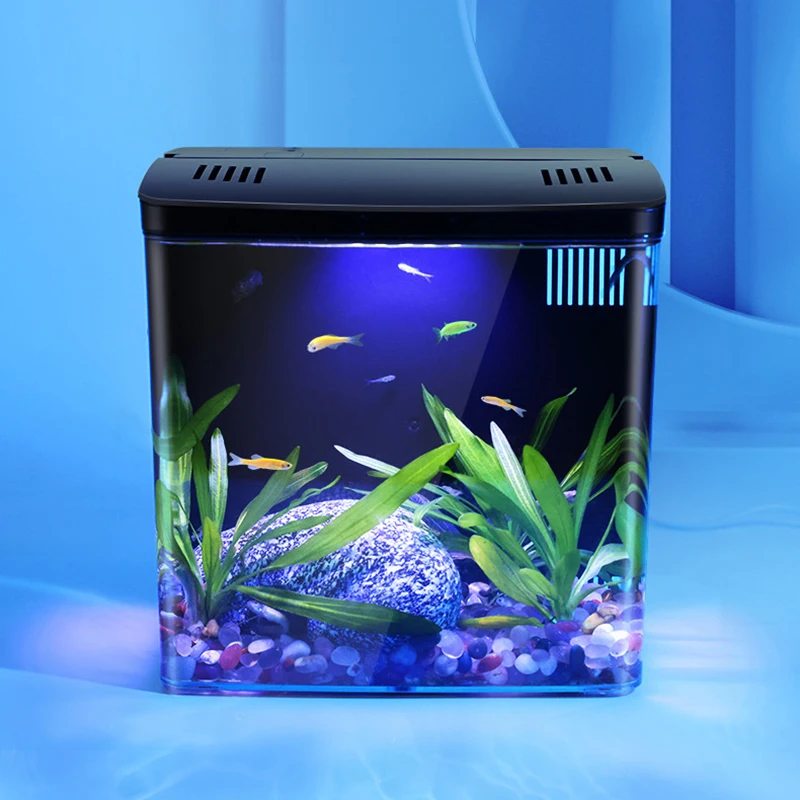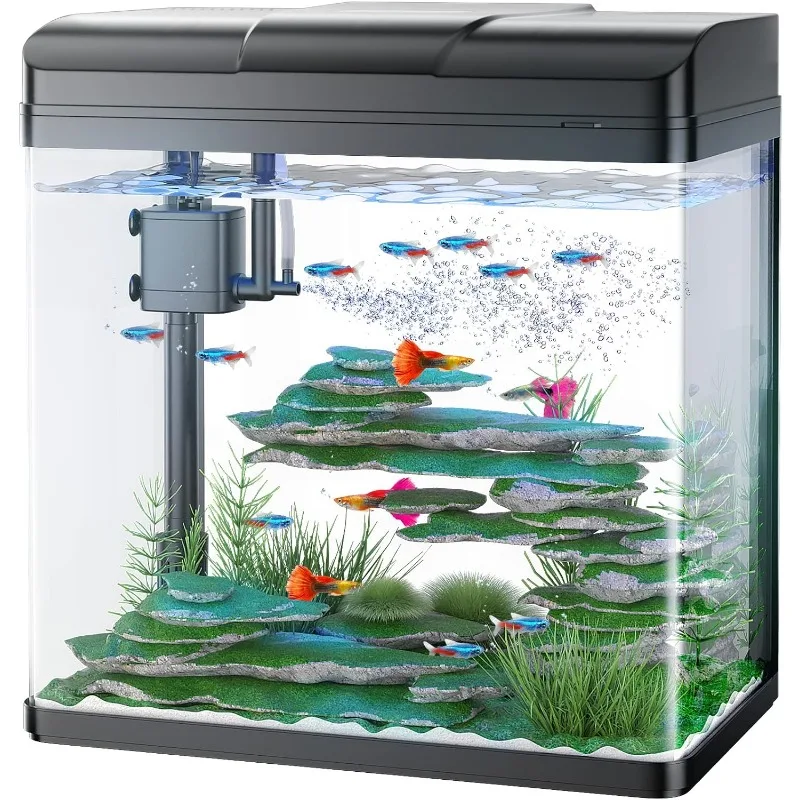Keeping a fish tank clean is crucial for the health and well-being of your aquatic pets. Regular maintenance ensures a healthy environment with optimal water quality and reduces the risk of diseases. However, cleaning a fish tank can be challenging, especially when trying to minimize stress for your fish. Here’s a comprehensive guide on how to clean a fish tank effectively without disturbing your fish.
Understanding the Importance of Regular Tank Maintenance
Regular maintenance is essential to keep your fish tank clean and your fish healthy. It involves tasks like cleaning the glass, removing debris, and maintaining water parameters such as pH and ammonia levels. Neglecting maintenance can lead to poor water quality, which stresses fish and makes them susceptible to diseases. Therefore, establishing a routine cleaning schedule is crucial for the overall well-being of your aquarium inhabitants.
Preparation: Gathering the Necessary Equipment
Before you start cleaning your fish tank, gather all the necessary equipment. This includes a fish net, algae scraper or pad, siphon hose or gravel vacuum, clean buckets designated for aquarium use only, and water conditioner. Having everything ready ensures a smooth cleaning process without the need to rush or leave your fish unattended.

Steps to Clean the Fish Tank Without Disturbing Fish
Turn Off Equipment: Start by turning off any equipment such as filters, heaters, and lights. This prevents accidental harm to both your fish and the equipment during cleaning.
Clean the Glass: Use an algae scraper or pad to gently clean the inside glass surfaces of the tank. Work slowly and carefully to avoid sudden movements that might startle the fish.
Remove Debris: Use a fish net to carefully remove any large debris, uneaten food, or dead plant matter from the tank. Do this slowly to avoid chasing fish around the tank.
Perform Water Change: Use a siphon hose or gravel vacuum to perform a partial water change. Aim to remove about 20-30% of the water to maintain water quality. Vacuum the substrate gently, focusing on areas with visible waste buildup.
Clean Decorations: If decorations are dirty or covered in algae, remove them one by one and clean them using aquarium-safe brushes or pads. Avoid using soap or detergents, as even trace amounts can harm your fish.
Prune Plants: If you have live plants, trim any dead or decaying parts to maintain water quality and aesthetic appeal.
Refill the Tank: Use the prepared water (treated with a water conditioner to remove chlorine and chloramines) to refill the tank. Ensure the temperature of the new water matches the tank water to avoid shocking your fish.
Turn Equipment Back On: Once the tank is refilled, turn the equipment back on gradually. Monitor the fish for any signs of stress and ensure all equipment is functioning correctly.
Tips for Minimizing Stress on Fish During Cleaning
Maintain Water Temperature: Sudden temperature changes can stress fish. Use a thermometer to monitor and match the temperature of new water with the tank water.
Avoid Rapid Movements: Move slowly and deliberately during cleaning to avoid startling the fish. Sudden movements can cause them to panic and potentially injure themselves.
Use Quiet Tools: Opt for aquarium tools that operate quietly. Loud or sudden noises can stress fish, so choose equipment that minimizes disturbance.
Observe Fish Behavior: Monitor your fish closely during and after cleaning. Healthy fish should resume normal behavior shortly after cleaning. If you notice signs of stress or illness, take appropriate action.
Maintaining a Regular Cleaning Schedule
Consistency is key to maintaining a clean and healthy fish tank. Establish a regular cleaning schedule based on the size of your tank, the number of fish, and the type of filtration system. Regular water testing and observation of fish behavior can help you adjust your cleaning schedule as needed to ensure optimal water quality.
Importance of Water Quality in Fish Tank Maintenance
Maintaining proper water quality is crucial for the health and longevity of your fish. Here are some key aspects to consider:
pH Levels:
Monitoring pH: Regularly test the pH of your aquarium water. Most freshwater fish prefer a pH range between 6.5 and 7.5. Sudden fluctuations can stress fish, so aim to keep pH levels stable.
Ammonia and Nitrite Levels:
Understanding Ammonia and Nitrite: Ammonia and nitrite are toxic to fish even at low levels. They are typically produced from fish waste and decaying organic matter. Use a test kit to monitor these levels and perform water changes accordingly.
Nitrate Levels:
Nitrate Accumulation: Nitrate is less toxic than ammonia and nitrite but can still be harmful at high levels. Regular water changes help keep nitrate levels in check. Aim to keep nitrate levels below 40 ppm (parts per million).
Temperature Control:
Maintaining Temperature: Different fish species have specific temperature requirements. Use a reliable heater and thermometer to maintain consistent water temperature within the recommended range for your fish.
Filtration System:
Choosing the Right Filter: Select a filter system appropriate for your tank size and fish population. Filters help remove debris, excess food, and harmful substances from the water, contributing to better water quality.
Regular Monitoring and Testing:
Testing Water Parameters: Invest in quality test kits to monitor water parameters regularly. Test for pH, ammonia, nitrite, nitrate, and other relevant parameters according to your fish species’ needs.
Observing Fish Behavior:
Detecting Issues Early: Pay attention to your fish’s behavior. Changes such as reduced appetite, lethargy, or gasping at the water surface can indicate water quality issues. Address any concerns promptly.
Additional Considerations for Fish Tank Maintenance
Lighting:
Lighting Schedule: Establish a consistent lighting schedule for your aquarium. Most fish require a day-night cycle similar to their natural habitat. Algae growth can be controlled by limiting the duration of light exposure.
Feeding Practices:
Proper Feeding: Feed your fish a balanced diet appropriate for their species. Overfeeding can lead to excess waste and poor water quality. Remove any uneaten food promptly to prevent it from decomposing in the tank.
Aquascaping:
Aquatic Plants: Live plants can help maintain water quality by absorbing nitrates and providing oxygen. Choose plants suitable for your fish and lighting conditions. Prune plants regularly to prevent overgrowth.
Health Checks:
Monitoring Fish Health: Regularly inspect your fish for signs of illness or injury. Quarantine new fish before introducing them to your main tank to prevent spreading diseases. Treat sick fish promptly in a separate tank if necessary.
Algae Control:
Managing Algae: Algae growth is natural but can become unsightly if unchecked. Use algae scrapers or pads to clean glass and decorations regularly. Maintain a balance of nutrients and lighting to control algae growth.
Water Testing and Records:
Keeping Records: Maintain a log of water test results and observations. This helps track changes over time and identify trends that may affect water quality. Adjust your maintenance routine based on these records.
Emergency Preparedness:
Having a Plan: Prepare for emergencies such as power outages or equipment failures. Keep backup supplies like battery-powered air pumps and heaters on hand to maintain essential water circulation and temperature.
Conclusion
Cleaning your fish tank without disturbing your fish requires patience, preparation, and a gentle approach. By following the steps outlined above and implementing tips to minimize stress, you can maintain a clean and healthy environment for your aquatic pets. Remember, a well-maintained tank not only enhances the beauty of your home but also promotes the longevity and well-being of your fish.










